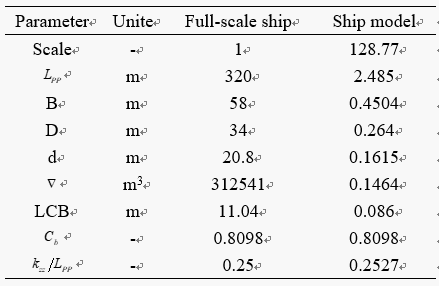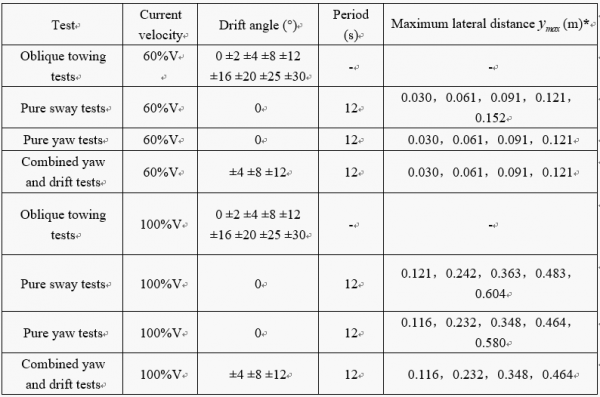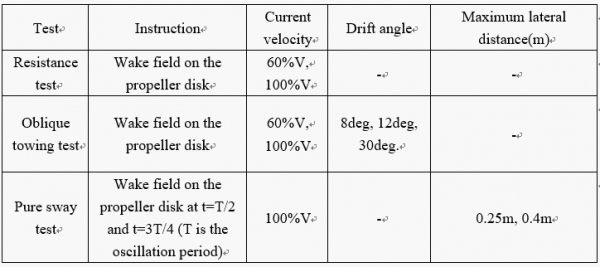Benchmark Test 202002 - Benchmark experimental study on planar motion mechanism tests and flow field measurement of standard ship model KVLCC2
2021-05-07
Benchmark Test Program
1. Background
Since the ship maneuverability standard "resolution MSC 137 (76)" has been issued and implemented by the International Maritime Organization (IMO), the maneuverability simulation technology in ship design stage is increasingly important. The system-based method with efficiency and accuracy is widely used in the prediction of ship maneuverability. In general, the hydrodynamic derivatives in this method obtained through the captive model tests or empirical formulae. In the past decades, viscous flow CFD technology has shown obvious potential in simulating the captive model tests to obtain hydrodynamic derivatives, but the accuracy verification of CFD simulation tools still depends on the experimental data. Therefore, since the 24th ITTC, the maneuverability Committee of the international towing tank Conference (ITTC) has been focusing on the progress of maneuvering experiments and recommended several standard ship models for numerical simulations. Many well-known international institutions performed the captive model tests using the standard ship model. Through the platform of SIMMAN conference, they shared the test data with the international maneuverability CFD researchers, which is used for the assessment of current simulation methods for ship maneuvering to aid code development, establish best practices, and guide industry.
2. Purpose
The State Key Laboratory of Ocean Engineering (hereinafter referred to as the laboratory) used the standard ship model KVLCC2 recommended by the ITTC Maneuverability Committee as the test model to organize benchmark experiments. The project uses the circulating water tank to carry out the planar motion mechanism (PMM) test and the PIV flow field measurement of the KVLCC2 ship model. The test results will be shared with relevant CFD researchers, and the results of numerical simulations will be mutually confirmed to enhance the credibility of CFD methods on the prediction of the maneuvering motions, and to promote the development of experiment capabilities and numerical simulation capabilities.
3. Instructions to participants
The State Key Laboratory of Ocean Engineering takes the KVLCC2 ship model as the object to organize the planar motion mechanism test and the flow field measurement benchmark experiment research. For detailed information on the ship model, test conditions, analysis data, etc., please refer to the Experimental scenario (Section 4).
(1) Encourage domestic and foreign research teams (personnel) to use various numerical methods/numerical software to carry out corresponding back-to-back numerical simulation studies, which are required to be carried out at the model scale. The State Key Laboratory of Ocean Engineering is responsible for collecting the numerical simulation results submitted by different teams and comparing and analyzing them with model experiments. It is recommended to provide numerical simulation uncertainty analysis results.
(2) Requirements for numerical simulation and benchmark experimental data: For static simulation, it should contain simulations of no less than 5 different drift angles, and each simulation should contain steady-state data of no less than 5s; for dynamic simulation, each kind of test should contain no less than 3 different maximum lateral distances, and each simulation should contain time-series data of no less than 3 stable response motion cycles. The hydrodynamic derivative of the ship model should be calculated. For the PIV experiments, the flow field information image at the measurement surface should be given.
4. Experimental scenario
(1)Ship model
The scale ratio of the model used in this experiment is 128.77. The bare hull is made of wood. The model parameters and corresponding actual ship data are shown in Table 1. The test was carried out in the circulating water tank of Shanghai Jiaotong University, and the test water temperature was 11.9 degrees Celsius.
Table 1 Main parameters

(2)Test condition
Table 2 Current velocity

Table 3 Test conditions for the PMM tests


Figure 1
Table 4 PIV test conditions

5. Registration
The organizers welcome broad participation from the ship maneuvering simulation community. The scholars who are interested in this benchmark study program should finish the registration (Appendix 1) and send it to the official email (kvlcc2benchmark@163.com) before 4th June 2021. After checked by the organizing committee, the report template will be provided to the research team/individual, and the numerical simulation should be completed independently according to the above experimental scenario. The final report should be submitted to the official email (kvlcc2benchmark@163.com) in the form of template before 1st September 2021. At the same time, the experimental results will be released to the research team/individual after all the results are submitted.
Participants can publish papers based on numerical calculation and test data but must indicate that "data source is benchmark experimental research project of State Key Laboratory of Ocean Engineering (No. GKZD010077)". If the participants use the relevant experimental test content for nonacademic purposes, they must be approved by the laboratory in writing.


